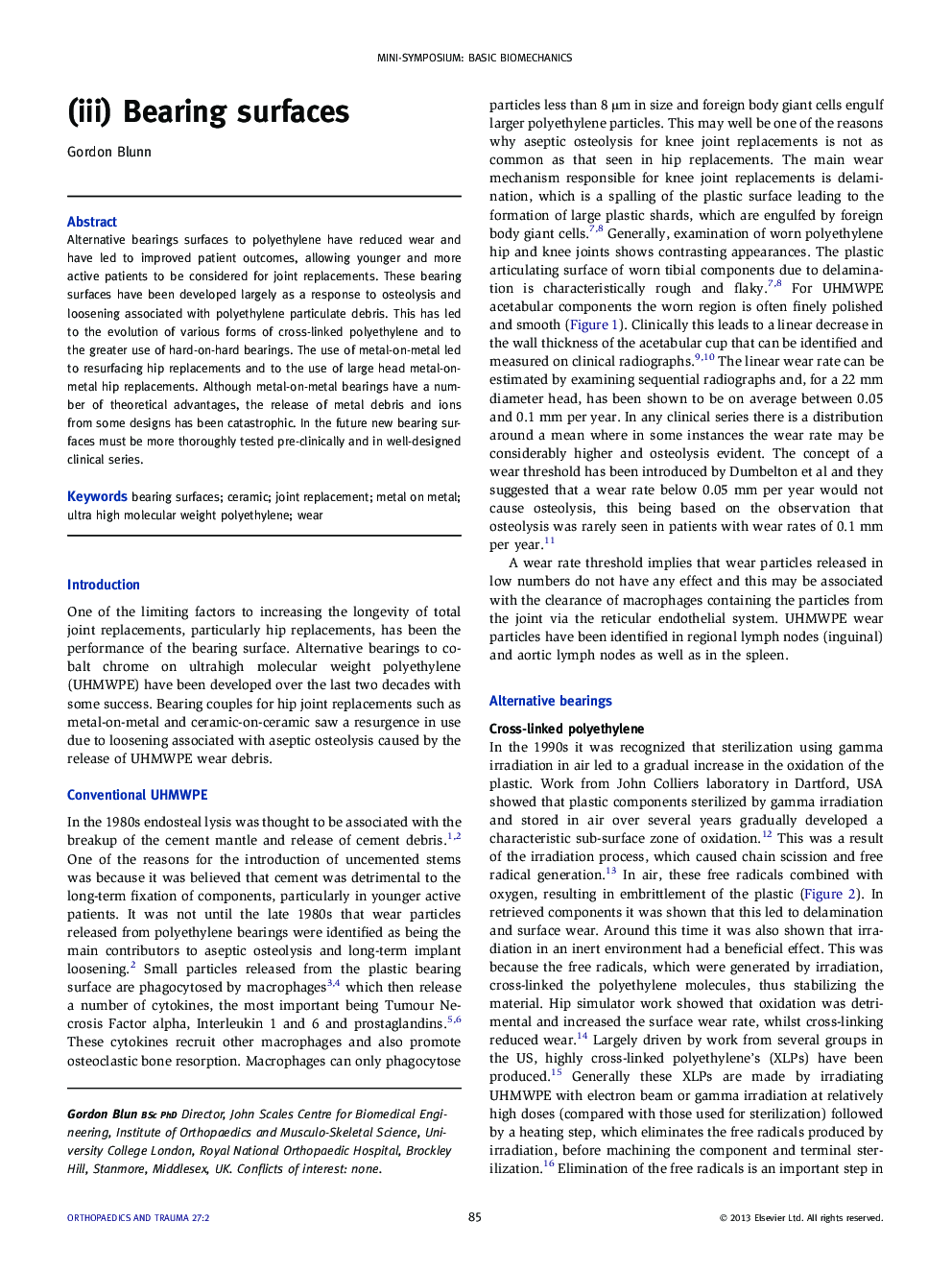| Article ID | Journal | Published Year | Pages | File Type |
|---|---|---|---|---|
| 4080429 | Orthopaedics and Trauma | 2013 | 8 Pages |
Alternative bearings surfaces to polyethylene have reduced wear and have led to improved patient outcomes, allowing younger and more active patients to be considered for joint replacements. These bearing surfaces have been developed largely as a response to osteolysis and loosening associated with polyethylene particulate debris. This has led to the evolution of various forms of cross-linked polyethylene and to the greater use of hard-on-hard bearings. The use of metal-on-metal led to resurfacing hip replacements and to the use of large head metal-on-metal hip replacements. Although metal-on-metal bearings have a number of theoretical advantages, the release of metal debris and ions from some designs has been catastrophic. In the future new bearing surfaces must be more thoroughly tested pre-clinically and in well-designed clinical series.
